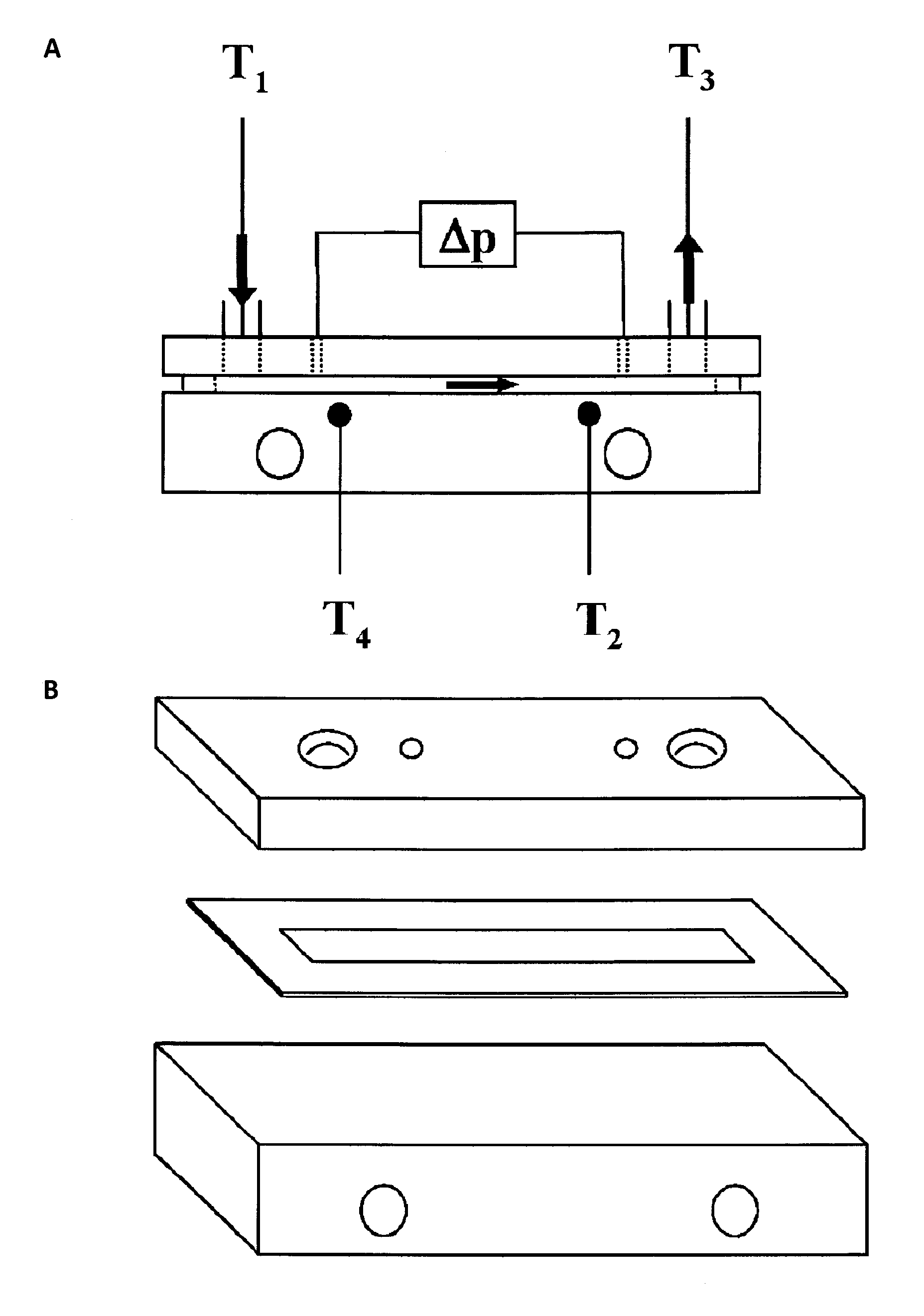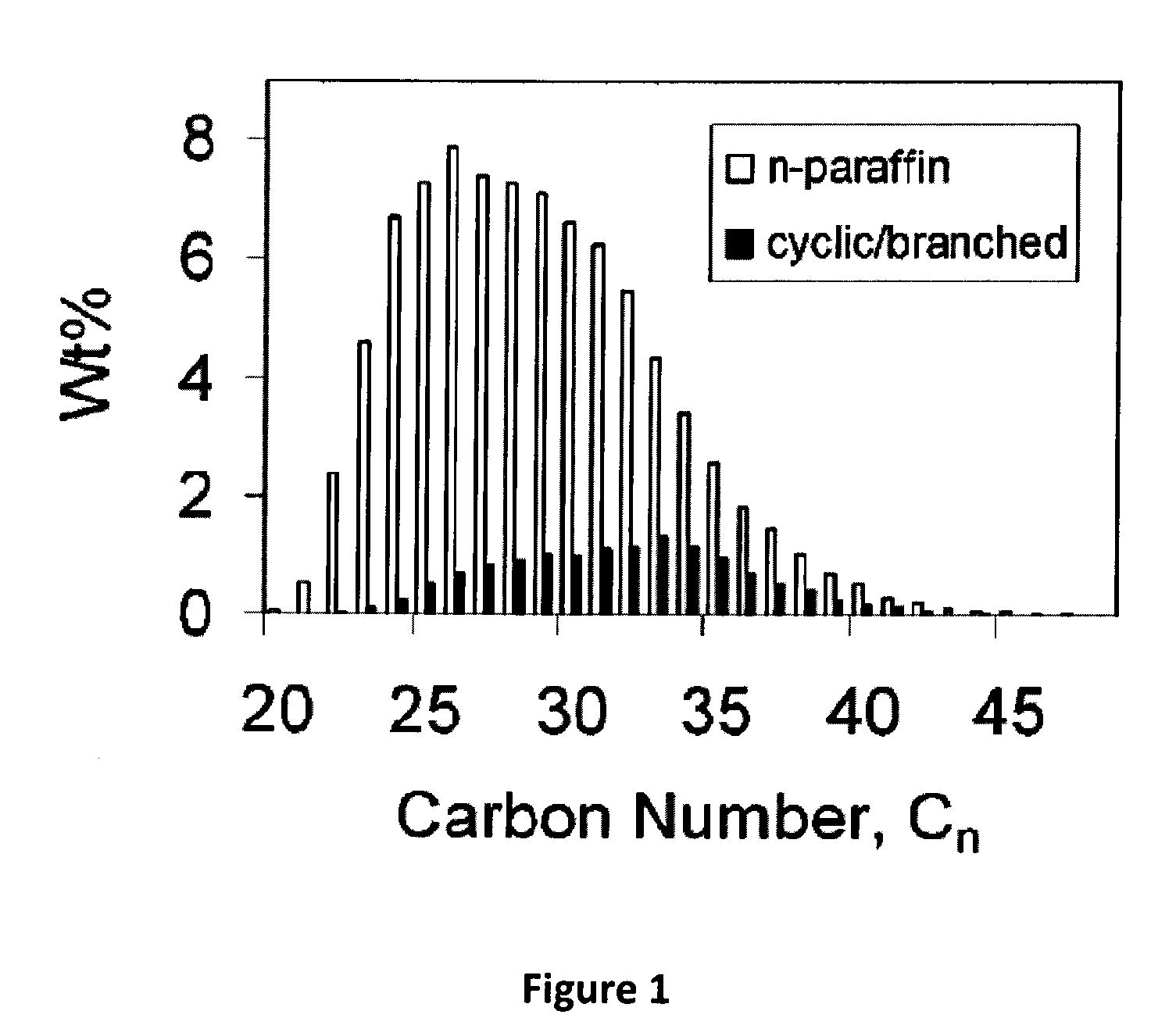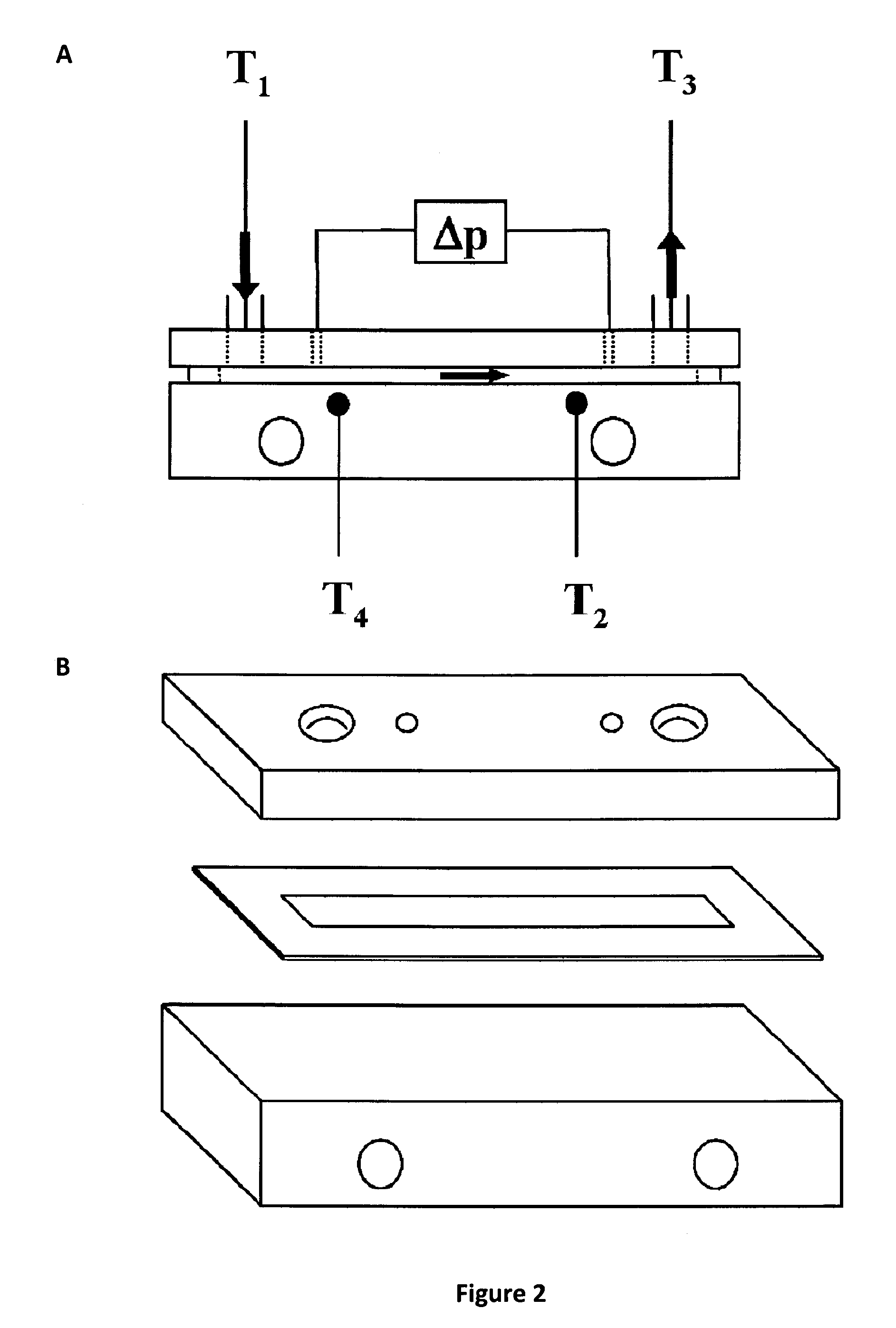Methods for Testing the Effect of Polymer Additives on Wax Deposition from Crude Oils and Reducing Wax Deposition from Crude Oil During Pipeline Transmission
a technology of additives and polymer additives, which is applied in the direction of instruments, borehole/well accessories, other domestic objects, etc., can solve the problems of long-standing wax deposition, cooling rate, and test effects that do not consider flow simultaneously, and achieve the effect of reducing wax deposition
- Summary
- Abstract
- Description
- Claims
- Application Information
AI Technical Summary
Problems solved by technology
Method used
Image
Examples
example i
[0032]Samples. All tests used a 3.0 wt % solution of multicomponent wax whose continuous carbon-number distribution ranges from C20 to C47 as shown in FIG. 1. The wax was a blend of two waxes from Aldrich: 55 wt % Aldrich number 327204 with a melting point from 53 to 57° C. and 45 wt % Aldrich number 411663 with a minimum melting point of 65° C. The higher melting point wax provides a significant amount of heavier paraffins, which are the primary components of waxy deposits. Furthermore, it has a nearly log-normal distribution of paraffins with carbon numbers greater than 30 carbons (C30), which is typical for commercial crude oils (Paso et al. (2003) AIChE J., 49:3241-3252). Finally, it should be noted that there is a critical carbon number, normally between C20 and C30, for which longer paraffins diffuse into the deposit over time and shorter paraffins diffuse out of the deposit, leading to a process called aging (Singh et al. (2001) AIChE J., 47:2111-2124). To observe the effects...
example ii
[0059]Synthesis and Subsequent Modification Maleic Anhydride Co-Polymerized with Styrene and with Vinyl Ethyl Ether via RAFT Polymerization
[0060]Materials. Carbon disulfide was obtained from Aldrich Chemical Company and distilled from MgSO4 prior to use. Diethyl ether and THF were of anhydrous grade from Aldrich Chemical Company. Mg° was obtained from Aldrich as thin shavings that were washed three times with 0.05M HCl, rinsed with water and then acetone and dried under vacuum. Maleic anhydride was obtained from Fisher Baxter Scientific and recrystallized from dry benzene and vacuum dried prior to use. Bromobenzene, ethylvinyl ether, AIBN and LiAlH4 were obtained from Aldrich Chemical Company and used as received. Behenamide was obtained from TCI America and used without further purification.
[0061]Instrumentation. NMR analyses (1H and 13C) were performed using a Bruker Avance 300 MHz NMR. Gel Permeation Chromatography was performed by Halliburton Energy Services Analytical Group usi...
PUM
| Property | Measurement | Unit |
|---|---|---|
| cloud point | aaaaa | aaaaa |
| cloud point | aaaaa | aaaaa |
| deposition surface temperature | aaaaa | aaaaa |
Abstract
Description
Claims
Application Information
 Login to View More
Login to View More - R&D
- Intellectual Property
- Life Sciences
- Materials
- Tech Scout
- Unparalleled Data Quality
- Higher Quality Content
- 60% Fewer Hallucinations
Browse by: Latest US Patents, China's latest patents, Technical Efficacy Thesaurus, Application Domain, Technology Topic, Popular Technical Reports.
© 2025 PatSnap. All rights reserved.Legal|Privacy policy|Modern Slavery Act Transparency Statement|Sitemap|About US| Contact US: help@patsnap.com



